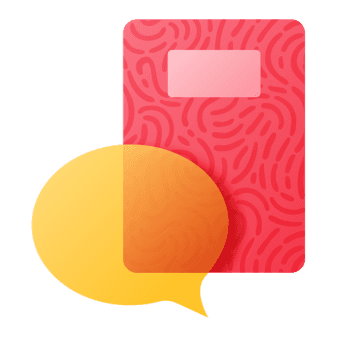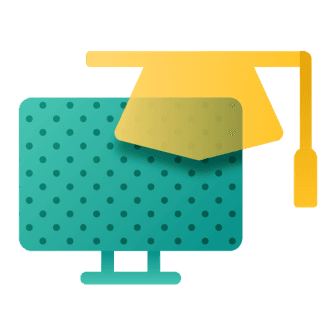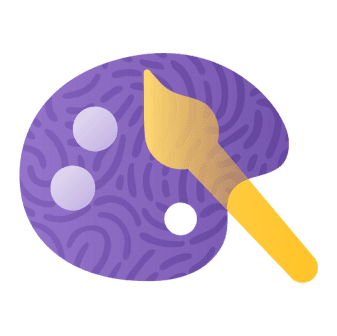Accessibility is a key aspect of education, ensuring that every student has equal access to learning opportunities. As we join the world in celebrating Global Accessibility Awareness Day 2023, we wanted to showcase how schools and teachers can leverage Microsoft tools to promote accessibility in the classroom and empower all students to achieve more.
Accessibility builds confidence and promotes inclusivity
We asked educators and parents in CEE how technology has impacted the lives of children with disabilities and learning difficulties. Eleni Kyriakouli, a teacher at the Rodion Pedia school in Rhodes Island, Greece, explains why she believes it has led learners to become more inclusive and supportive of others, “I think the major reason for using technology is to break down the barriers that exist between students with different abilities and promote inclusion and acceptance in the classroom.”
When a student with Asperger’s Syndrome was having difficulties communicating and interacting with the other children, she observed how using a notebook in class allowed him to have a more structured framework for collaborating with his peers, “This has led to significant improvements in his social skills, communication, and overall confidence. We see him becoming much more engaged in the classroom and making friends easily,” says Kyriakouli. Watch the video to learn more.
Learn to optimize accessibility in the classroom using Microsoft tools
When choosing the right devices for staff and students, school leaders must consider a myriad of important factors. Key among them is the need to address the challenges that many students face while pursuing their education. To learn how you can enable Microsoft accessibility tools and features, such as those provided by Windows and Teams, visit our clickable demo.
Windows is a fantastic resource for educators looking to broaden their students’ learning experience and create new support systems that enable them to achieve more. The latest version of the OS, Windows 11, features a smooth design with a focus on accessibility and ease of use. It includes a wide range of built-in apps and tools made to support learners with physical disabilities, learning difficulties, as well as the hearing and visually impaired.
One incredibly helpful tool that is often used by students of all ages to improve fluency, comprehension and focus is Immersive Reader. This literacy tool is available in Word, OneNote, Microsoft Edge and Teams and allows users to customize the reading experience according to their individual needs and personal goals. Readers can simplify page layouts, remove clutter, break text into syllables and increase spacing between lines and letters, all with a click of a button. Immersive Reader’s text decoding solutions encourage independent reading and are especially helpful for students with learning differences such as dyslexia and dysgraphia. The tool is free and can be used by anyone who wants to make reading on their device easier.
Another great tool, and one that is especially useful for students with physical disabilities, is Voice Access. It allows users to control their device and author text using only a microphone and their voice. Students can switch between apps, browse the internet, and compose emails, all without typing. This feature does not require an internet connection and can be accessed at any time. Similarly, learners can use the voice typing tool to enter text on their devices by speaking. The tool is powered by Azure Speech services, supports multiple languages and has an automated punctuation feature which allows for faster typing and increased efficiency in writing.
Narrator is a screen-reading app that enables visually impaired students to explore what is on their screen and navigate between menus. Users can choose from multiple languages and a selection of natural-sounding voices to guide them along. For students who are deaf or hard of hearing, the Live Captions tool provides an automatic transcription of any audio and displays it on screen in real-time. Live Captions integrates with the Windows desktop, so students can read the captions even while working in other apps. Users can also customize how the captions appear on the screen.
Using Microsoft Teams, educators can encourage and support students to become independent learners, freeing up more time for teachers to address students’ individual needs. The app serves as a hub for real-time collaboration, group projects, meetings, file sharing, and more. Chosen by more than 240.000 educational institutions around the world, it is a practical and versatile tool that has become the favorite of many teachers and students alike. Teams has a number of built-in apps that are designed to expand its functionality, help educators become more efficient and enable self-learning.
One of these tools is a free app that allows teachers to support and track reading fluency in the classroom. After receiving a reading assignment, students will record their reading on camera and submit it back to the teacher. Reading Progress will detect the student’s reading level, pronunciation, and fluency, and highlight the results. As the work is being reviewed, data is automatically collected and organized into actionable insights, enabling the teacher to spend more time with the student and less time analyzing data.
Reading Coach is a Teams integrated app that builds on the success of Reading Progress by identifying the words that each student struggled with the most and presenting them again, prior to the assignment being turned in. This allows the student to continue practicing and to pursue their reading goals independently. Being able to see the progress they are making in real-time can help boost the child’s level of confidence as they continue to improve their reading.

Students using Reading Progress and Reading Coach
How new technologies continue to fuel accessibility in the classroom
In a recent episode of the Edu TechKit Podcast, a series exploring the latest in education technology for teachers and students, host Denis Chiurtu and guests discuss the growing interest in assistive technology solutions, “This is a very important topic, in my opinion, especially when we see [that] a lot of people and governments are taking steps towards making education inclusive,” says Diana Ghazaryan, K-12 Industry Executive for CEE and member of Microsoft’s Steering Committee. She notes that companies, and society at large, are missing out on a considerable talent pool when schools fail to engage students with disabilities by providing an inclusive learning experience.
In addition to Microsoft’s unique product offering and built-in assistive solutions, there is one other project that she believes holds great promise for the future. AI for Accessibility is a Microsoft initiative involving researchers, academics and developers around the world working together to build intelligent solutions powered by Microsoft’s cognitive services. “The grants are provided to those who develop the application for disabled people, with disabled people,” says Ghazaryan. This ensures that each team has a fundamental understanding of the needs of its intended audience. Listen to the full podcast episode.
Accessibility in the classroom is about using the resources at our disposal to reflect and support the differences of everyone. Technology can be a great catalyst for creating equal access to learning and empowering students of all ages and abilities to achieve more. Find out more about Microsoft’s accessibility tools for learning here. Join Microsoft’s Supporting Accessibility in Education Webinar in celebration of Global Accessibility Awareness Day and find out how to broaden your institution’s reach using Microsoft tools for accessibility.










